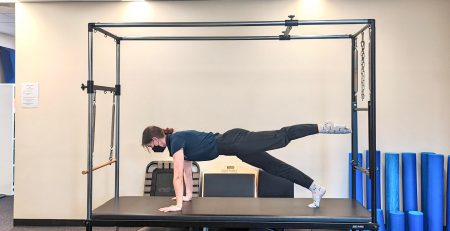Hyperventilation and The BradCliff® Method
Breathing can be considered dysfunctional when the person can no longer breathe efficiently or if it is ineffective in response to changing environment or does not meet the physiological needs of the person. This can in turn affect their quality of life, challenging homeostasis, resulting in physical symptoms and compromised health.
In practices such as Yoga, stress reduction, pain relief and meditation breathing is a prime area of focus. Research is revealing that the breath is a powerful tool and that regular practice of mindful breathing or meditation can facilitate a better state of health and wellbeing (Chaidlow et al 2002, Van Dixhoorn 220, Kim et al 2012, Telles et al 2008, Joshi & Telles 2009, Telles et al 2012).

Hyperventilation can be acute or chronic and refers to a breathing pattern disorder where the depth and rate of breath exceed physiological requirements.
Patients often only present when experiencing acute episode/s (often recognized as panic attacks) on top of chronic HVD . It is often poorly diagnosed and patients may have seen many specialists prior to diagnosis to exclude organic disease. Chronic HVS affects up to 10% of the normal population (Newton 2012).
Chronic HVS is characterised by an increased tidal volume (i.e. not fully expiring) leading to lowered C02 levels and respiratory alkalosis symptoms such as changes in vasomotor tone including decreased cerebral, coronary and cutaneous blood flow, decreased availability of oxygen to tissues and increased excitability in the peripheral nervous system. When hyperventilation occurs for a period of time there is a drive by the body to restore pH balance by excreting more alkaline buffer. These individuals then become subject to reduced capacity to tolerate acidosis from any other source. This means that even a breath hold or a single sigh could trigger symptom onset.

Typical Symptoms of Chronic HVS
- Frequent sighing and yawning
- Breathing discomfort
- Disturbed sleep
- Erratic heartbeats
- Feeling anxious and uptight
- Pins and needles
- Upset gut/nausea
- Clammy hands
- Chest Pains
- Shattered confidence
- Tired all the time
- Achy muscles and joints
- Dizzy spells* or feeling spaced out
- Irritability or hypervigilance
- Feeling of ‘air hunger’
- Breathing discomfort
Chronic HVS may also occur secondary to other diseases/disorders especially obstructive and restrictive disorders such as COPD and asthma. Accurate diagnosis using The BradCliff® Method is made after fully assessing clinical findings using specific and relevant tests and questionnaires (after excluding other organic causes). This will include musculo-skeletal assessment as well assessing breathing patterns, the use of peak flow meters, oximetry and possibly the use of real time ultrasound assessment of the diaphragm.

The BradCliff® Method is a functional breathing based program that combines breathing / movement and posture. The method is a structured research-based physiotherapy assessment and treatment program for functional breathing pattern disorders which looks at breathing dysfunction as an indicator of physiological and mechanical imbalances and psychological stress in the human body.
As therapists we apply similar principles to abnormal breathing patterns as we do to other suboptimal movement patterns: i.e.
1. Identify the abnormal strategy and make the patient aware of it
2. Teach optimal strategy at a low load in a ‘restful’ position
3. Use feedback to reinforce improved pattern and decrease sup-optimal pattern
4. Add load or make movement more complicated whilst maintaining optimal pattern. Chronic HVS results in underuse and deconditioning of the diaphragm muscle and due to this progress can take some time.
Treatment focuses on breathing retraining to improve poor patterns and weaknesses (see above) as well as optimising posture, addressing stress and relaxation, addressing sleep issues, general activity and movement.
Breathing Pattern Disorders may have implications in many other areas of musculoskeletal and general medicine. There is considerable evidence to support the close relationship between posture and breathing (Smith et al 2006, Hodges et al 2001, Deindl et al 1994, Kolnes 2012). In addition the links between chronic pain and BPD (define) are being established using motor learning techniques such as somatocognitive evaluation and therapy. Other areas where it may be useful are with athletes, vocal chord dysfunction, anxiety and chronic pain.
Improving a patients state by optimizing breathing using breathing re-training maybe beneficial and relevant to many of our clients including those with chronic back and neck pain, postural problems, depression, anxiety, cardiovascular disease, asthma and chronic obstructive pulmonary disease.
Author

Sarah Clay
Senior Physiotherapist
Senior Pilates Instructor
Owner
South Australian Institute Technology 1987
Sarah has always had a keen interest in working with Sporting Clubs and spent many years at ‘grass roots’ level working with Football, Rugby League and Rugby Union Clubs. She continues to work closely with Athletes and musculo-skeletal injuries, now in the rehabilitative setting. More…










